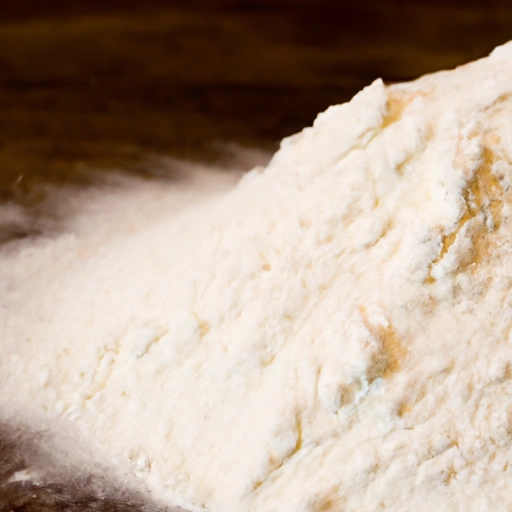Flour
Description

Flour is a fundamental ingredient in many cuisines around the world. It is a powder made by grinding raw grains, roots, beans, nuts, or seeds. Flours are predominantly used in baking but have applications far beyond the bakery. Types of flour vary based on the source ingredient and the processing methods involved, which can include bleaching or refining. Common types of flour include all-purpose flour, cake flour, pastry flour, bread flour, whole-wheat flour, and gluten-free varieties such as almond flour, coconut flour, and rice flour.
Common uses
Flour is most commonly used in baking bread, pastries, and other baked goods. It also serves as a thickening agent for sauces and soups, a coating for fried foods, and a binding agent in meatloaf and veggie patties. Its applications are vast and varied, making it an indispensable ingredient in both sweet and savory dishes.
Nutritional value
Calories
A cup of all-purpose (AP) flour, which is approximately 120 grams, contains about 455 calories (American) which is about 1900 kilojoules (kJ) (Azjan).
Protein
Flour typically contains about 10 to 13 grams of protein per 100 grams, depending on the type. Whole grain flours have higher protein content compared to refined flours.
Fat
Most flours have a low-fat content, with around 1 gram of fat per 100 grams of AP flour.
Carbohydrates
Carbohydrates are the primary macronutrient in flour, with a cup of AP flour containing about 95 grams (American), or roughly 250 grams per kilogram (European).
Vitamins
Whole grain flours are richer in B vitamins, while refined flours are often enriched with vitamins such as folic acid, riboflavin, niacin, and thiamine in order to replace some of the nutrients lost during processing.
Minerals
Different flours contain varying levels of minerals like iron, calcium, magnesium, and potassium, with whole grain flours typically offering a better mineral profile.
Health benefits
Whole grain flours are a good source of dietary fiber and other nutrients that contribute to digestive health, lower risk of heart disease, and help with weight management. The B vitamins found in enriched flours are essential for various bodily functions, including energy production and brain health.
Potential risks
Consuming too much white, refined flour can lead to health issues such as obesity, type 2 diabetes, and heart disease due to its high glycemic index and low nutrient density. Additionally, flour can be a source of gluten, which is problematic for individuals with celiac disease or gluten sensitivity.
Common recipes
Flour is used in a multitude of recipes including breads, cakes, cookies, pastries, pasta, dumplings, and pancakes. It is also a key ingredient in batter for deep-frying and a thickener for sauces and gravies.
Cooking methods
Flour can be used in various cooking methods such as baking, frying, steaming, boiling, and sautéing. It provides structure to baked goods and helps to create a desirable texture in many dishes.
Pairing with other ingredients
Flour pairs well with almost any ingredient, from sweet to savory, including fruits, vegetables, meats, dairy products, and flavors like vanilla, chocolate, and spices.
Summary
Flour is an essential and versatile ingredient found in kitchens worldwide. Its unique properties make it suitable for a wide range of culinary uses, from baking bread to thickening sauces. While it is nutritious in its whole grain form, refined flours should be consumed in moderation. As a cornerstone of global cuisine, flour's adaptability and functionality continue to make it a vital component of countless recipes.